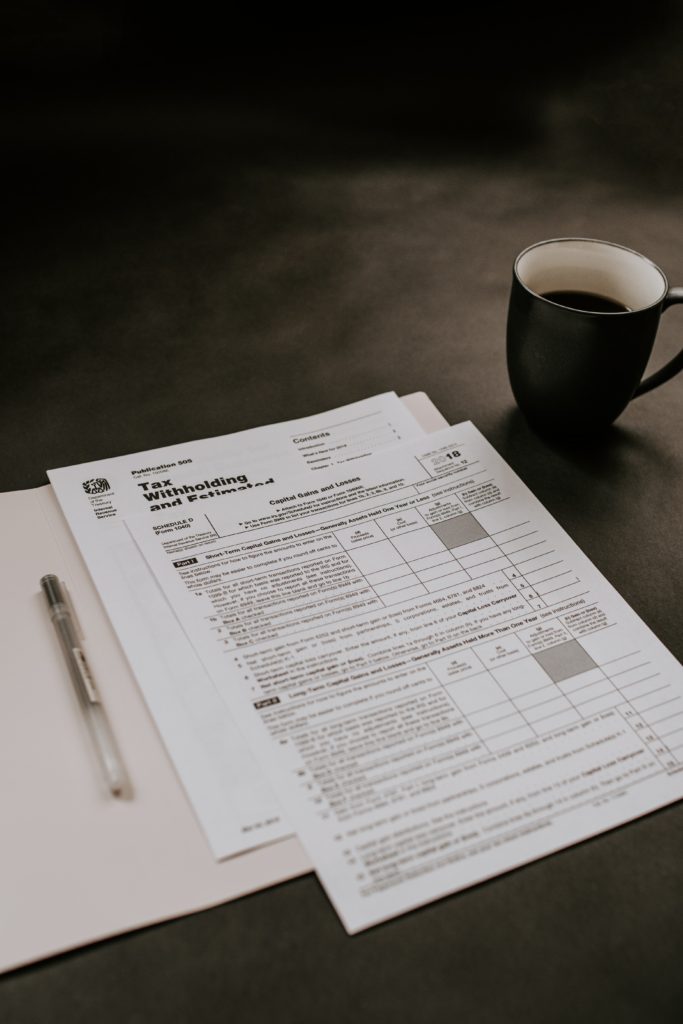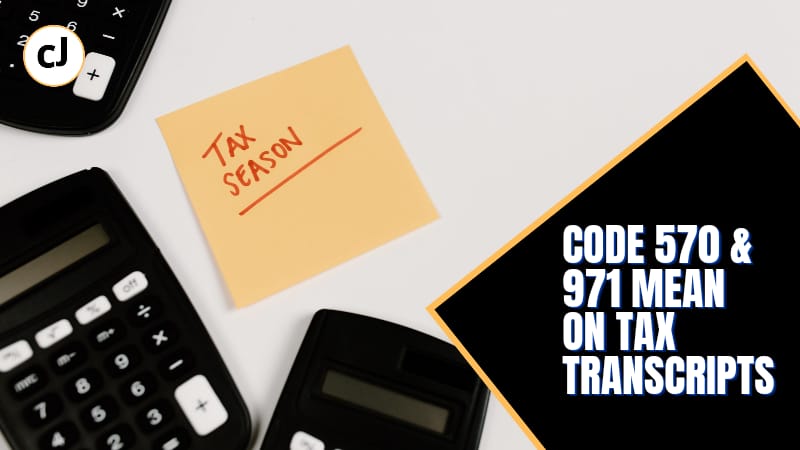If you’ve looked at your tax transcript, you may have seen codes 570 and 971. But what do they mean? And should you be worried? In this blog post, we’ll tell you what Code 570 And 971 Mean On Tax transcripts and what you need to do if you see them on your transcript.
As a tax-payer, you might also want to know what certain transaction codes mean when they appear on your tax transcript, and the course of action. In this article, we will discuss TC 570 and 971 and their implications. We will also highlight the resolution if you encounter these transaction codes.
Quick Navigation
What Is A Tax Transcript?
A tax transcript is a summary of your entire tax filing, along with your adjusted gross income (AGI). It makes it easier for you to file your next returns and can be used as proof for getting a loan, home mortgage, or college financial aid.
Earlier, it contained a full range of personal information, including sensitive data like your Social Security Number (SSN).
Recently, the IRS has changed the format to hide some of the crucial information to protect you against data and identity theft. Because access to such information can lead to fraudulent and false returns. Now, only a part of the information is visible that is enough for requisite verification.
Generally, money lenders or financial aid officers use your SSN to link copies of tax transcripts to your file to verify your identity. To make it more efficient, the IRS has added another level of verification.
The lender/financial aid officer can now create a 10-digit Customer File Number (different from your SSN) for you. You can include this on your tax transcript application so that anyone can match it with your file when it is printed out.
How do tax transcripts help?

- Tax transcripts are acceptable in most cases. It is easier and cheaper to get a tax transcript instead of the entire tax return file.
- Tax transcripts give you concise information about your previous returns. It aids in minimal errors while filing returns by helping you to match IRS records. These can be stimulus payment, advance child tax credits, and any tax form submitted on your behalf like income, unemployment, Social Security benefits, mortgage interest, etc. If you have lost or misplaced any of these documents, you can get a IRS transcript for free and access this information.
How To Get A Tax Transcript?
You can get your tax transcript:
- Online: You can download or print it from the IRS website from Get Transcript Online
- Via email: You can request a tax transcript to be sent by email by filling out the Get Transcript by Email form.
- Via Phone: You can use an automated phone line to request the IRS for your tax transcript. You have to call the agency at 1-800-908-9946.
What Are The Different Types Of Tax Transcripts?
There are different types of transcripts that give you different types of summarized data.
Tax Return Transcript: This is the basic type that contains all the necessary information, along with your adjusted gross income.
Tax Account Transcript: Besides your basic tax returns, this transcript also gives you information about any changes that you might have made after filing.
Record of Account Transcript: This is a comprehensive one that contains all the information from the first two types. It is available for the current year and the previous three years.
Wage and Income transcript: This transcript is needed when you need specific income information, for example from a W-2, 1099, 1098, or Form 5498. It also contains health savings account details.
Verification of non-filing letter: If you have not filed any return in the previous year, you can request this to prove it. It is also available for the current and past three years. Beyond that, you have to give a paper application for the letter.
Now, let us understand how you can decipher a tax transcript and use the information for better understanding.
What Are Transaction Codes On A Tax Transcript?

Transaction Codes are three digit codes (like TC 014 indicate an address change from the previous return) added to a tax transcript. They are used to identify a transaction being performed, and to maintain a history of the changes made to a return on a Master file. There are codes to take an action, and another one to undo it.
There are many codes with no real consequence to the taxpayer, while there are others, which indicate an action from your end, or an adjustment to your return.
What Is Code 570 On A Tax Transcript?
You might see a TC 570 (Transaction Code 570) on your tax transcript (Under the Explanation of Transactions section) after your return comes through the initial system processing by the IRS. According to the IRS Master Files Codes, TC 570 means Additional Liability Pending or Credit Hold. In other words, it means that your tax refund is on hold and more checks are being performed. It freezes the module from refunding or processing any credit out.
A TC 570 does not always mean that there is any action needed from your end. You might not see it under the refund status check tool on the IRS website because they sometimes use such internal codes for their reference. If there is any action needed from your end, then that will reflect under this section. TC 570 can be due to several reasons that put your refund on hold.
What does TC 570 mean?
It could mean that you owe money to the government agencies, or something is not right in your refund processing. To know the actual reason, you might have to contact the IRS or wait for an update.
How is TC 570 resolved?

You cannot do anything to resolve TC 570 unless otherwise stated. Once TC 570 gets resolved, you might get TC 571 or 572. As TC 570 also means that it will take time to review, you might see a TC 570 with a future date. TC 571 means reversal or release from 570, and TC 572 stands for correction of 570 processed in error. In both cases, it means that your refund will be processed.
What Is Code 971 On A Tax Transcript?
You need not get stressed over TC 971 as well. The official meaning of this code is Miscellaneous Transactions. It means that some additional checks are being done or information is needed. It can be in reference to an adjusted return amount.
Also, it can be for a collection due, duplicate tax return processed, amended tax return, earned income tax filing status, duplicate notice sent to a spouse, or other reasons.
You must not confuse TC 971 with Publication 971, which refers to a situation when a spouse may be relieved of the due amount, including taxes and penalties, in case of a joint tax return.
How is TC 971 resolved?
A tax transcript helps you to file timely and hassle-free returns, and clear IRS (Internal Revenue Service) backlogs. It is a consolidated version of your tax return, along with a history of changes and transactions. They can also be used as proof at various places.
When tax returns are processed after filing, the IRS adds Transaction Codes (TC) to indicate any change, adjustments, and transactions to your return. Each TC indicates a specific action or guideline. They are used by the IRS to keep a track of step-by-step processing of your return.
TC 971 means that your return is being reviewed. And it can take upto as many as 120 days to get resolved. Generally, it is sent to you as an indication or notice that an adjustment is being made. Upon resolution, they will send a different notice stating that. You need not take any action from your end unless otherwise stated.
Conclusion
You will be surprised to know that IRS transcripts are another way to check for fraud and malicious activities. If you notice anything, you can immediately report the same for preventive actions. Tax transcripts are easy to read and analyze once you are well-versed with the transaction codes and sections.
If you want to get your tax transcript and check out the details yourself. Then visit the FAQ section on the IRS website.

